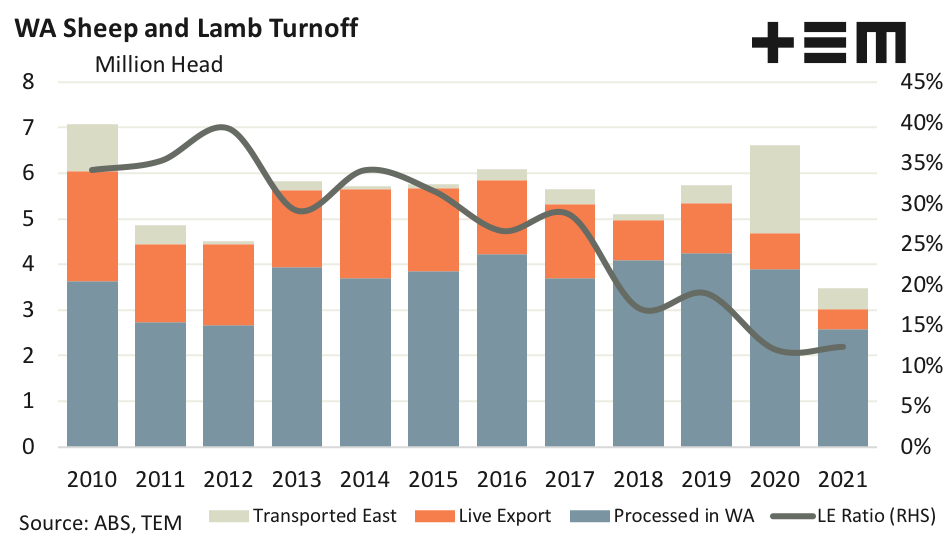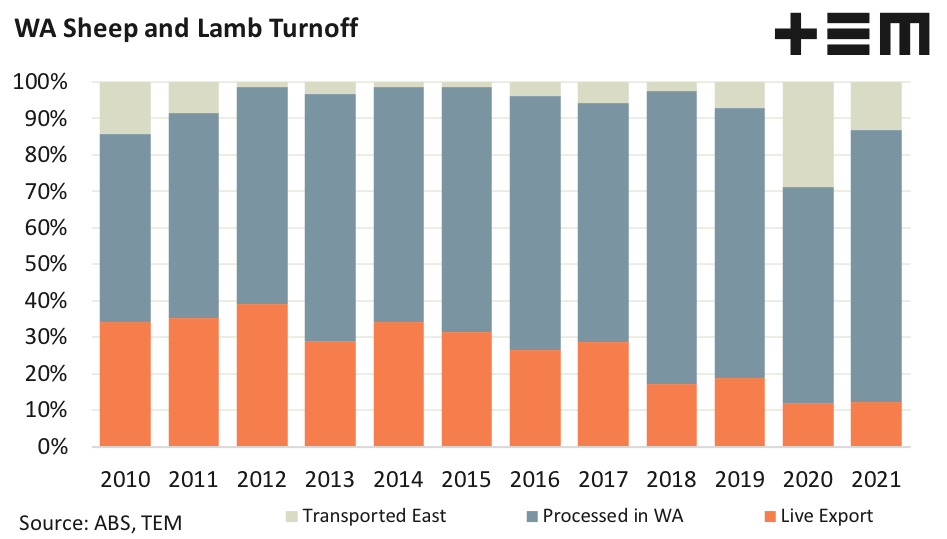Will the last one out switch off the lights

The Snapshot
- In 2011 around 30% of the live sheep export volumes exited the country from ports outside of Western Australia.
- The proportion of live sheep export volumes from WA used to account for more than 30% of their total sheep and lamb annual turnoff. However, in recent years this has shrunk to just 12% of total annual turnoff.
- Annual average mortality rates in live sheep export transports for the last few years have been around 0.2%, which means that 99.8% of sheep transported have made it to their destination in good health.
The Detail
It was just a decade ago that the live sheep export industry was both an east coast and west coast affair. In 2011 around 30% of the live sheep export volumes exited the country from ports outside of Western Australia. However, since 2018 the trade has been predominantly a WA led industry, at least in terms of port of exit with 98% of the annual live export turnoff of sheep leaving from the west.
Much of the last decade saw the proportion of live sheep export volumes from WA account for more than 30% of their total sheep and lamb annual turnoff. The live export sales option available to the WA sheep producer was a crucial element in effective management of their livestock numbers, particularly during dry seasons. However, since the introduction of the northern hemisphere summer moratorium to the trade in 2018 the volumes being turned off to the live export sector in WA have shrunk to just 12% of total annual turnoff.
The 2020/21 season saw uncharacteristically large volumes of WA sheep and lamb transported to the eastern states, giving the WA producer another sales avenue, but this trade is usually only about 4% of annual turnoff most years so can’t be relied upon by the WA sheep farmer every season.
Currently, the Department of Agriculture, Water and Environment (DAWE) are taking submissions on the live sheep export moratorium and the live export sector is keen to see the length of the moratorium period reduced to allow increased shipments where is it safe for the animals to do so.
The live sheep export trade has made some significant steps in animal welfare improvement in recent years including investment in research on reducing heat stress, reductions in stocking rates and ensuring that exporters are responsible for the welfare of livestock through to the point of slaughter which have helped to reduce mortality rates significantly on voyages. Annual average mortality rates for the last few years have been around 0.2%, which means that 99.8% of sheep transported for live export make it to their destination in good health.
If common sense doesn’t prevail and the moratorium period remains unchanged there is a risk that the live sheep sector will continue to dwindle away in the west, as it has done in the eastern states. The Covid-19 pandemic has demonstrated the susceptibility of weak supply chains, particularly when supply or demand hinges on a handful of market participants. The gradual decline, and eventual death, of the live sheep export trade would diminish the diversity of the sheep meat supply chains within WA, nationally and around the globe.



